#National Institute of Biotechnology
Text
NIAB Recruitment 2022: Salary Rs.55000 per month.. Jobs in National Institute of Animal Biotechnology, Hyderabad.. | KKG INFO
NIAB Recruitment 2022: Salary Rs.55000 per month.. Jobs in National Institute of Animal Biotechnology, Hyderabad.. | KKG INFO
National Institute of Animal Biotechnology (NIAB Hyderabad) at Gachibowli, Hyderabad under the Department of Science and Technology, Government of India.
NIAB Hyderabad Technical Officer Recruitment 2022: National Institute of Animal Biotechnology, Gachibowli, Hyderabad (NIAP Hyderabad) under the Department of Science and Technology, Government of India invites applications from eligible…
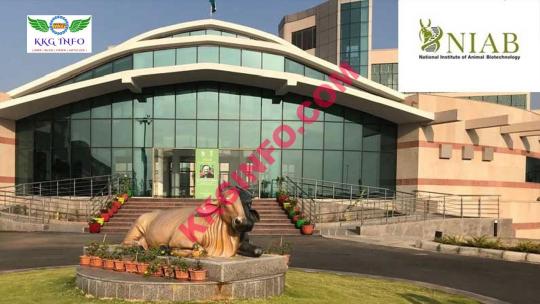
View On WordPress
#animal#Biotechnology#BTech Jobs#Hyderabad#INFO#Institute#Jobs#jobs that have been created recently#KKG#latest jobs lab technician islamabad rawalpindi#latest jobs railway#latest jobs website#month#National#NIAB#ppsc latest jobs 2021#rbi latest jobs#Recruitment#Rs.55000#salary#yumbe latest jobs
0 notes
Text
Top Ukrainian female Scientists, Doctors, Mathematicans, Economists, Artists, Athletes, Leaders, Astronauts, Military Leaders, etc.

The Ukrainian mathematician Maryna Viazovska who won Fields Medal — the highest honor for a mathematician.
Selected few famous Ukrainian scientists
We decided to talk about outstanding Ukrainian women who've changed and continue to change the world of science to show that girls can do anything.
Maryna Viazovska, a mathematician
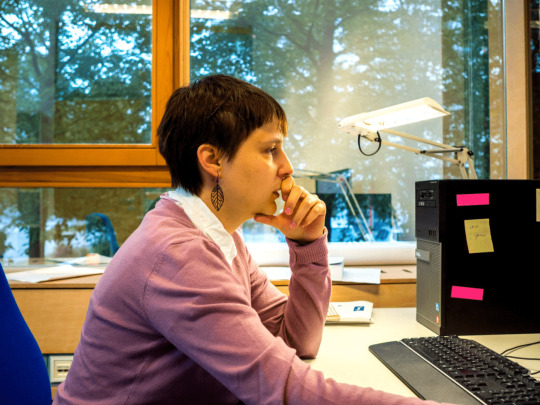
Ukrainian scientist, doctor of natural sciences. Ukrainian mathematician Maryna Viazovska, who currently works at the Swiss Federal Institute of Technology, received the Salem Prize 2016, which is extremely prestigious for mathematicians. The commission awarded the prize to Maryna Viazovska for her world-class discovery. Ukrainian solved a problem that scientists have been working on for more than 400 years, i.e. packing spheres in 8-dimensional space, and co-authored the one in 24-dimensional space. Previously, the problem of packing spheres was solved only for spaces with three or fewer dimensions.
Yuliia Bezvershenko, a physicist

Ukrainian scientist in theoretical physics, popularizer of science, public figure, Ph.D. of physic and mathematical sciences, Yuliia Bezvershenko is included in the list of TOP-20 Ukrainian women in STEM for 2018-2019. Yuliia deals with mathematical methods applied to the problems of dynamics of quantum systems in external fields and control of quantum systems. She is convinced and proves that one can practice theoretical physics with passion.
According to Yuliia, at one time she heard an important thing from her mentor: you can be yourself in any field! Therefore, one shouldn't be afraid of stereotypes and prejudices of others.
If you're a girl, a woman, no matter where, no matter how old you are, and your heart is in science, don't be afraid. Go there boldly. After all, nothing will stop a woman, ready to work and conduct scientific discoveries.
Mariia Bailiak, a biologist
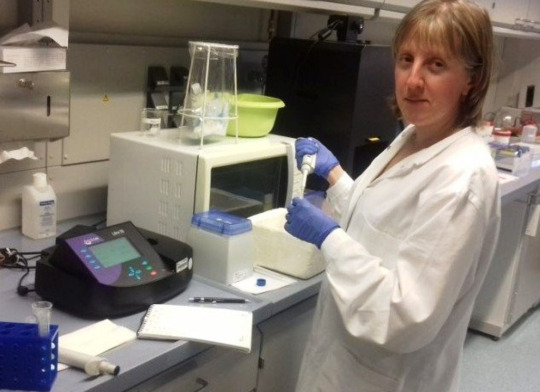
Doctor of Biological Sciences, Associate Professor of Biochemistry and Biotechnology in Vasyl Stefanyk Precarpathian National University. Scientist Mariia Bailiak studies biochemistry and researches the influence of various plants and substances on the aging process. Mariia Bailiak's discoveries concern, for instance, the increase of stress resistance and the general condition of living organisms (and therefore, us and you, and it's good news: stress resistance doesn't hurt anyone), and anti-aging substances. Thanks to her intensive work, Mariia is in the Top 10 successful Ukrainian women scientists.
Olha Brovarets, a biophysicist

Ukrainian biophysicist, Doctor of Physic and Mathematical Sciences, winner of the Scopus Awards Ukraine in the nomination "Best team of scientists who achieved significant scientific results without Western collaborations" and the President of Ukraine Award for Young Scientists, and a leading researcher in the Department of Molecular and Quantum Biophysics Institute of Molecular Biology and Genetics of the National Academy of Sciences of Ukraine. Olha is the youngest doctor habilitatus in Ukraine; she became a doctor at 29. Olha is now 34 years old and she continues to study biophysics: her discoveries give an understanding of the mechanisms of cancer and many other diseases caused by mutations. It was Olha who calculated the pattern of mutations in DNA leading to cancer and many other diseases.
Nana Voitenko, a biologist
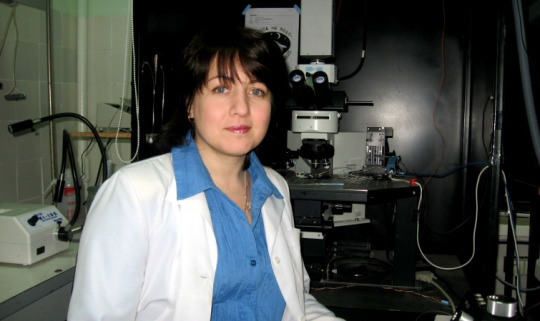
Professor, Doctor of Biological Sciences, neurobiologist, head of the department of sensory signaling of the Bohomolets Institute of Physiology of NAS of Ukraine. Nana Voitenko has been researching pain for more than 20 years. What do we know about pain? For most people on Earth, pain is something they'd like to get rid of as soon as possible if they feel it. Nana Voitenko deals with the nature of pain, as it occurs and spreads in the human's central and peripheral nervous systems. In the laboratory, Voitenko and her colleagues managed to develop an experimental treatment that affects only those cells involved in pain syndromes. Besides, Nana Voitenko is actively promoting science: she's a lecturer at the "Days of Science" initiative, was a lecturer at TED-x Kyiv in 2013, and the organizer of the "Week of Knowledge about the Brain." Science is close, and it's accessible to everyone.
Ella Libanova, an economist

Scientist in socioeconomics, demography, and labor economics, academician of the National Academy of Sciences of Ukraine, Doctor of Economics, Professor, Honored Economist of Ukraine. Ella Libanova is an academician-secretary of the economics department of the National Academy of Sciences of Ukraine and, by the way, the first and only female member of the presidium of the National Academy of Sciences for 102 years of its work. She teaches social statistics at the Faculty of Economics of the Taras Shevchenko National University of Kyiv; introduced a method for measuring human development at the region level, used by the State Statistics Service of Ukraine for annual calculations.
Nina Virchenko, a mathematician

Professor of the Department of Mathematical Analysis and Probability Theory, Doctor of Physic and Mathematical Sciences Nina Virchenko is one of the most famous Ukrainian mathematicians. She is the author of more than 500 scientific and methodological works, including 20 books published in Ukrainian, Russian, English, and Japanese. Nina Virchenko is recognized not only in Ukraine but also abroad; she's a member of the Australian, American, Belgian, Edinburgh, London mathematical societies. In the end, it's not surprising, because mathematics knows no boundaries and recognizes all the achievements, wherever you obtain them.
Nina Virchenko's fate wasn't easy: at 18 in 1948, she was sentenced to 10 years in the Gulag camps for preparing a "political conspiracy, revolt" and participating in the "Ukrainian-nationalist gang." Years in the camps didn't stop the future doctor from achieving her dreams. In 1964, she defended her Ph.D. and her Dr. habil. dissertation in Kyiv in 1988.
Nataliia Vynohrad, an epidemiologist

Epidemiologist, professor, doctor of medical sciences, Nataliia Vynohrad manages the Department of Epidemiology of Lviv National Medical University. She's an expert of the World Health Organization in responding to epidemic threats and the Ministry of Health of Ukraine on epidemiology, an adviser to the Ministry of Emergencies of Ukraine on anti-epidemic protection and biosafety. Agree, you can't find a more relevant profession in 2020-2021. Once an ordinary girl from a village in the Khmelnytskyi region, and now the author of 305 scientific papers, and 8 copyright certificates for inventions and patents of Ukraine, proves that nothing is impossible for a girl who knows what she wants.
Nataliia Polonska-Vasylenko, a historian
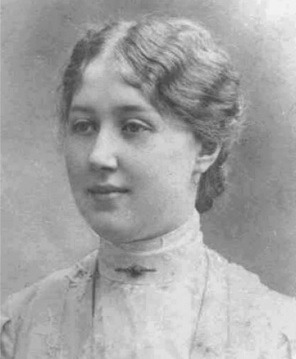
From the early 20th century until the end of her life in the 1970s, our first heroine studied the history and archeology of Ukraine, both in Ukraine and later in exile in Germany and the Czech Republic. In a historically troublesome time for Ukraine, she became one of the leading representatives of the state school in Ukrainian historiography, that is, she promoted the idea of independence and continuity of the Ukrainian historical process. Nataliia Polonska-Vasylenko is the author of almost 200 scientific works on the history of Zaporizhzhia and Southern Ukraine, which remain relevant to this day.
Valentyna Radzymovska, a biologist

One of the most prominent names in our history is Valentyna Radzymovska, a professor, doctor of medical and physiological sciences, founder of the Ukrainian school of physiologists and biochemists, and a public figure. The Soviet authorities repressed Valentyna Radzymovska for her political activities and participation in the Union for the Liberation of Ukraine in the 1930s. However, it didn't prevent her from becoming the author of more than 60 works on biochemistry, pathophysiology, pediatrics, psychoneurology, physiology, and phthisiology. Like the previous scientist in our article, she left Ukraine in 1945, emigrating first to Germany and then to the United States.
Radzymovska contributed hugely to the study of tuberculosis and its treatment in children.
Nina Morozhenko, a physicist

Although the sun is the closest star to us, it still hides many fascinating mysteries. Ukrainian astronomer, helio physicist, doctor of physic and mathematical sciences, author of 56 scientific works, Nina Morozhenko devoted her entire life to studying the structure of our guide light and the processes taking place on it. After all, everything happening on the Sun affects many areas of human activity. Without studying the sun, it's impossible to understand not only what the future holds for our civilization but also what is happening in space, i.e. on the distant stars the humanity is so eager to reach. Nina Morozhenko's scientific works on solar prominences were the first in the world and gave rise to scientific research by helio physicists from many countries. The Ukrainian researcher's significant contribution to the physics of the sun once again demonstrates that physics isn't a purely "male" science.
192 notes
·
View notes
Text
The family tree of humanity is much more interconnected than we tend to think. “We’re culturally bound and psychologically conditioned to not think about ancestry in very broad terms,” Rutherford says. Genealogists can only focus on one branch of a family tree at a time, making it easy to forget how many forebears each of us has.
Imagine counting all your ancestors as you trace your family tree back in time. In the nth generation before the present, your family tree has 2n slots: two for parents, four for grandparents, eight for great-grandparents, and so on. The number of slots grows exponentially. By the 33rd generation—about 800 to 1,000 years ago—you have more than eight billion of them. That is more than the number of people alive today, and it is certainly a much larger figure than the world population a millennium ago.
This seeming paradox has a simple resolution: “Branches of your family tree don’t consistently diverge,” Rutherford says. Instead “they begin to loop back into each other.” As a result, many of your ancestors occupy multiple slots in your family tree. For example, “your great-great-great-great-great-grandmother might have also been your great-great-great-great-aunt,” he explains.
The consequence of humanity being “incredibly inbred” is that we are all related much more closely than our intuition suggests, Rutherford says. Take, for instance, the last person from whom everyone on the planet today is descended. In 2004 mathematical modeling and computer simulations by a group of statisticians led by Douglas Rohde, then at the Massachusetts Institute of Technology, indicated that our most recent common ancestor probably lived no earlier than 1400 B.C. and possibly as recently as A.D. 55. In the time of Egypt’s Queen Nefertiti, someone from whom we are all descended was likely alive somewhere in the world.
Go back a bit further, and you reach a date when our family trees share not just one ancestor in common but every ancestor in common. At this date, called the genetic isopoint, the family trees of any two people on the earth now, no matter how distantly related they seem, trace back to the same set of individuals. “If you were alive at the genetic isopoint, then you are the ancestor of either everyone alive today or no one alive today,” Rutherford says. Humans left Africa and began dispersing throughout the world at least 120,000 years ago, but the genetic isopoint occurred much more recently—somewhere between 5300 and 2200 B.C., according to Rohde’s calculations.
At first glance, these dates may seem much too recent to account for long-isolated Indigenous communities in South America and elsewhere. But “genetic information spreads rapidly through generational time,” Rutherford explains. Beginning in 1492, “you begin to see the European genes flowing in every direction until our estimates are that there are no people in South America today who don’t have European ancestry.”
In fact, even more recent than the global genetic isopoint is the one for people with recent European ancestry. Researchers using genomic data place the latter date around A.D. 1000. So Christopher Lee’s royal lineage is unexceptional: because Charlemagne lived before the isopoint and has living descendants, everyone with European ancestry is directly descended from him. In a similar vein, nearly everyone with Jewish ancestry, whether Ashkenazic or Sephardic, has ancestors who were expelled from Spain beginning in 1492. “It’s a very nice example of a small world but looking to the past,” says Susanna Manrubia, a theoretical evolutionary biologist at the Spanish National Center for Biotechnology.
Not everyone of European ancestry carries genes passed down by Charlemagne, however. Nor does every Jew carry genes from their Sephardic ancestors expelled from Spain. People are more closely related genealogically than genetically for a simple mathematical reason: a given gene is passed down to a child by only one parent, not both. In a simple statistical model, Manrubia and her colleagues showed that the average number of generations separating two random present-day individuals from a common genealogical ancestor depends on the logarithm of the relevant population’s size. For large populations, this number is much smaller than the population size itself because the number of possible genealogical connections between individuals doubles with each preceding generation. By contrast, the average number of generations separating two random present-day individuals from a common genetic ancestor is linearly proportional to the population size because each gene can be traced through only one line of a person’s family tree. Although Manrubia’s model unrealistically assumed the population size did not change with time, the results still apply in the real world, she says.
Because of the random reshuffling of genes in each successive generation, some of your ancestors contribute disproportionately to your genome, while others contribute nothing at all. According to calculations by geneticist Graham Coop of the University of California, Davis, you carry genes from fewer than half of your forebears from 11 generations back. Still, all the genes present in today’s human population can be traced to the people alive at the genetic isopoint. “If you are interested in what your ancestors have contributed to the present time, you have to look at the population of all the people that coexist with you,” Manrubia says. “All of them carry the genes of your ancestors because we share the [same] ancestors.”
And because the genetic isopoint occurred so recently, Rutherford says, “in relation to race, it absolutely, categorically demolishes the idea of lineage purity.” No person has forebears from just one ethnic background or region of the world. And your genealogical connections to the entire globe mean that not too long ago your ancestors were involved in every event in world history.
2K notes
·
View notes
Text
Which search engine is best for academic research? Hint: It's not Wikipedia

PubMed
PubMed is a free resource supporting the search and retrieval of biomedical and life sciences literature with the aim of improving health–both globally and personally.
The PubMed database contains more than 34 million citations and abstracts of biomedical literature. It does not include full-text journal articles; however, links to the full text are often present when available from other sources, such as the publisher's website or PubMed Central (PMC).
Available to the public online since 1996, PubMed was developed and is maintained by the National Center for Biotechnology Information (NCBI), at the U.S. National Library of Medicine (NLM), located at the National Institutes of Health (NIH).

Google Scholar
Google Scholar provides a simple way to broadly search for scholarly literature. From one place, you can search across many disciplines and sources: articles, theses, books, abstracts, and court opinions, from academic publishers, professional societies, online repositories, universities, and other websites. Google Scholar helps you find relevant work across the world of scholarly research.

Semantic Scholar
Semantic Scholar provides free, AI-driven search and discovery tools, and open resources for the global research community. With Semantic Scholar, researchers can understand a paper at a glance. Our system extracts meaning and identifies connections from within papers, then surfaces these insights to help Scholars discover and understand research.
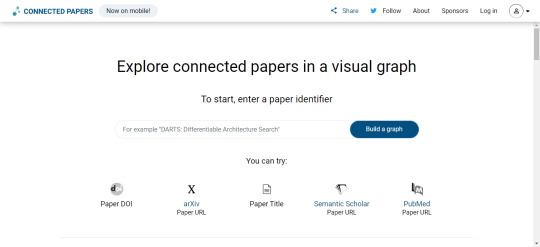
Connected Papers
Connected Papers is a unique, visual tool to help researchers and applied scientists find and explore papers relevant to their field of work.
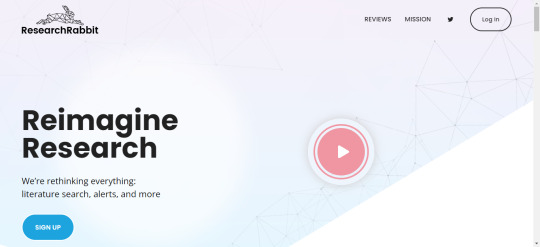
Research Rabbit
Research Rabbit is starting with our Discovery app which unlocks a completely novel way to search for papers and authors, monitor new literature, visualize research landscapes, and collaborate with colleagues.
#pubmed#google scholar#semanticscholar#research rabbit#connected papers#researchers#research paper#research#biotechnology#biotech#science#biology#biochemistry#studyblr#molecularbiology#notes#class notes#students#biotechnology science#useful information#search engines & search marketing#search engine#phd scholar#phd#phd candidate#thesis#university#grad school#phd topics#wikipedia
993 notes
·
View notes
Photo

Wearable antimicrobial copper nanomesh sticks to human skin, killing microbes nearly instantly
A team of researchers from the University of Tokyo, the Korea Research Institute of Bioscience and Biotechnology and the Center for Emergent Matter Science & Thin-Film Device Laboratory RIKEN 2-1 Hirosawa has developed a wearable antimicrobial nanomesh material that sticks to human skin, killing microbes nearly instantly. They have published their creation in Proceedings of the National Academy of Sciences.
Humans have known of the antimicrobial properties of copper for thousands of years. Ancient Egyptians, for example, used it to treat wounds to prevent infections. In modern times, copper has been applied to counters and tabletops to kill bacteria in homes and hospitals. In this new effort, the researchers took a new approach to using copper to fight infections: making it nearly invisible.
Copper is heavy and can be ungainly when used as an antimicrobial material. To make it easier to use, the researchers created tiny copper strands and spun them together randomly, creating a mesh. They then applied pressure to flatten the mesh. At three microns thick, the result is so thin that it cannot be seen by the human eye or felt when touched. But it is bendable and stretchy, which means it can be used in a variety of ways to kill viruses and bacteria.
Read more.
97 notes
·
View notes
Link
Astronaut Stephen Bowen NASA April 22, 2024 NASA astronaut Stephen Bowen, along with representatives from NASA and the International Space Station National Laboratory, will visit Boston on Wednesday, April 24, and Thursday, April 25, as part of the agency’s Destination Station to highlight research opportunities aboard the station. Destination Station was created to educate the public and engage prospective researchers about the benefits, capabilities, and opportunities to use the space station. The space station has been continuously inhabited for more than 23 years, enabling more than 5,000 researchers to conduct more than 3,500 innovative experiments in the areas of biology and biotechnology, human health, space and physical science, and technology. Throughout the week, NASA and the ISS National Lab will meet with a variety of academic institutions, business incubators, and private-sector companies with ties to the Boston community. During the visits, Bowen will provide perspectives on living and working in space. Media who wish interview Bowen during the outreach events in Boston, should contact Kara Slaughter at [email protected] or 281-483-5111. Bowen was the first submarine officer selected to be a NASA astronaut. He most recently served as commander of NASA’s SpaceX Crew-6 mission to the station where he was part of a six-month research mission, Expedition 69. He is a veteran of three space shuttle flights to the station, including STS-126, STS-132, and STS-133. Bowen has logged a total of 227 days in space and conducted 10 extravehicular activities in his career. His 10 spacewalks make him one of five humans who have conducted that many spacewalks and he is third on the all-time list for most cumulative spacewalking time. Bowen and the crews of Expedition 68 and 69 conducted more than 200 science experiments including tissue chip research, bioprinting human cells and tissues in space, and studying antibodies in microgravity. Bowen is a Massachusetts native and earned his bachelor’s degree from the United States Naval Academy in Annapolis, Maryland, and his master’s degree from the Massachusetts Institute of Technology in Cambridge. Over the years, NASA’s Destination Station has led to research collaborations aboard the orbiting laboratory with a variety of academic and commercial companies. This visit also is a prelude to the 13th annual International Space Station Research and Development Conference at the Boston Marriott Copley Square from July 29 – Aug. 1, 2024. Learn more about the International Space Station and its crews at: http://www.nasa.gov/station Discover the International Space Station U.S. National Laboratory at: https://www.issnationallab.org -end- Kara Slaughter Johnson Space Center, Houston 281-483-5111 [email protected]
2 notes
·
View notes
Text

What is NEET Exams in India ?
The National Eligibility cum Entrance Test (NEET) is a competitive examination in India for students aspiring to pursue undergraduate medical and dental courses (MBBS/BDS) in government or private medical colleges across the country. Here's a concise definition in 10 lines:
NEET is conducted by the National Testing Agency (NTA) on behalf of the Ministry of Education, Government of India.
It replaced multiple medical entrance exams previously held by various states and institutions, creating a single standardized test nationwide.
NEET evaluates a student's knowledge in physics, chemistry, and biology (botany and zoology).
The exam consists of multiple-choice questions and is conducted annually in multiple languages.
To be eligible for NEET, candidates must have completed 10+2 or equivalent with Physics, Chemistry, Biology/Biotechnology, and English.
There are also eligibility criteria regarding age limit and attempts.
NEET scores are used by both government and private medical colleges for admission to undergraduate medical programs.
The exam has a significant impact on the future career paths of aspiring medical professionals.
NEET aims to standardize the admission process, ensuring fairness and transparency.
Despite controversy and debates surrounding its implementation, NEET remains the primary entrance examination for medical aspirants in India.
3 notes
·
View notes
Photo




Black Paraphernalia have posted a overview excerpt summary of a NIH study that was done. This subject is a very near to our heart and we being health care professionals who read many research studies in general and understand the double and triple risk a black woman face on a day to day but especially when it come to maternal care in the United States started with SLAVERY.
We decided to do a few post on Black women and Childbirth disparities and injustices in the medical arena. The sad thing even as health care license professionals, we have experienced covert discrimination and disparity when it came to our own professional positions and personal health.
This is the first of a few posts that we will present in hopes of B1 community awareness. Please check out this post and others to come.
For the entire study click on the title to read in full.
Health Equity Among
Black Women in the United States
Journal of Women's Health NIH - The National Center for Biotechnology Information advances science and health
J Womens Health (Larchmt). February 2021; 30(2): 212–219.Published online 2021 Feb 2. doi: 10.1089/jwh.2020.8868
Black women in the United States experienced substantial improvements in health during the last century, yet health disparities persist. Black women continue to experience excess mortality relative to other U.S. women, including—despite overall improvements among Black women—shorter life expectancies and higher rates of maternal mortality.
Moreover, Black women are disproportionately burdened by chronic conditions, such as anemia, cardiovascular disease (CVD), and obesity. Health outcomes do not occur independent of the social conditions in which they exist.
The higher burden of these chronic conditions reflects the structural inequities within and outside the health system that Black women experience throughout the life course and contributes to the current crisis of maternal morbidity and mortality. The health inequities experienced by Black women are not merely a cross section of time or the result of a singular incident.
No discussion of health equity among Black women is complete unless it considers the impacts of institutional- and individual-level forms of racism and discrimination against Black people. Nor is a review of health equity among Black women complete without an understanding of the intersectionality of gender and race and the historical contexts that have accumulated to influence Black women's health in the United States.
Research consistently has documented the continued impacts of systematic oppression, bias, and unequal treatment of Black women. Substantial evidence exists that racial differences in socioeconomic, education and employment and housing outcomes among women are the result of segregation, discrimination, and historical laws purposed to oppress Blacks and women in the United States.
The intersectionality of gender and race and its impact on the health of Black women also is important. This intersection of race and gender for Black women is more than the sum of being Black or being a woman: It is the synergy of the two. Black women are subjected to high levels of racism, sexism, and discrimination at levels not experienced by Black men or White women.
In contrast to Black women, White women in the United States have benefited from living in a politically, culturally, and socioeconomically White-dominated society. These benefits accumulate across generations, creating a cycle of overt and covert privileges not afforded to Black women.
The history of Black women's access to health care and treatment by the U.S. medical establishment, particularly in gynecology, contributes to the present-day health disadvantages of Black women. Health inequality among Black women is rooted in slavery. White slaveholders viewed enslaved Black women as a means of economic gain, resulting in the abuse of Black women's bodies and a disregard for their reproductive health. Black women were forced to procreate, with little or no self-agency and limited access to medical care.
The development of gynecology as a medical specialty in the 1850s ushered in a particularly dark period for the health of Black women. With no regulations for the protection of human subjects in research, Black women were subjected to unethical experimentation without consent. Even in more contemporary times, these abuses continue.
As a result of this history and the accumulation of disadvantages across generations, Black women are at the center of a public health emergency. Maternal mortality rates for non-Hispanic Black women are three to four times the maternal mortality rates of non-Hispanic White women.In
Racism and gender discrimination have profound impacts on the well-being of Black women. Evidence-based care models that are informed by equity and reproductive justice frameworks (reproductive rights as human rights need to be explored to address disparities throughout the life course, including the continuum of maternity care, and to ensure favorable outcomes for all women.
Health does not exist outside its social context. Without equity in social and economic conditions, health equity is unlikely to be achieved,and one cost of health inequality has been the lives of Black women.
The above is a summary excerpt take from the study by the Journal of Women's Health NIH - The National Center for Biotechnology Information advances science and health
BLACK PARAPHERNALIA DISCLAIMER - PLEASE READ
#black paraphernalia#disparity in black women health care#maternal deaths in healthcare with black women#the worst sight
11 notes
·
View notes
Text

Salad in space? New research says it's not a healthy choice
Lettuce and other leafy green vegetables are part of a healthy, balanced diet—even for astronauts on a mission.
It's been more than three years since the National Aeronautics and Space Administration made space-grown lettuce an item on the menu for astronauts aboard the International Space Station. Alongside their space diet staples of flour tortillas and powdered coffee, astronauts can munch on a salad, grown from control chambers aboard the ISS that account for the ideal temperature, amount of water and light that plants need to mature.
But there is a problem. The International Space Station has a lot of pathogenic bacteria and fungi. Many of these disease-causing microbes at the ISS are very aggressive and can easily colonize the tissue of lettuce and other plants. Once people eat lettuce that's been overrun by E. coli or Salmonella, they can get sick.
With billions of dollars poured into space exploration each year by NASA and private companies like SpaceX, some researchers are concerned that a foodborne illness outbreak aboard the International Space Station could derail a mission.
In new research published in Scientific Reports and in npj Microgravity, University of Delaware researchers grew lettuce under conditions that imitated the weightless environment aboard the International Space Station. Plants are masters of sensing gravity, and they use roots to find it. The plants grown at UD were exposed to simulated microgravity by rotation. The researchers found those plants under the manufactured microgravity were actually more prone to infections from a human pathogen, Salmonella.
Stomata, the tiny pores in leaves and stems that plants use to breathe, normally close to defend a plant when it senses a stressor—like bacteria—nearby, said Noah Totsline, an alumnus of UD's Department of Plant and Soil Sciences. When the researchers added bacteria to lettuce under their microgravity simulation, they found the leafy greens opened their stomata wide instead of closing them.
"The fact that they were remaining open when we were presenting them with what would appear to be a stress was really unexpected," Totsline said.
Totsline, the lead author of both papers, worked with plant biology professor Harsh Bais as well as microbial food safety professor Kali Kniel and Chandran Sabanayagam of the Delaware Biotechnology Institute. The research team used a device called a clinostat to rotate plants at the speed of a rotisserie chicken on a spinner.
"In effect, the plant would not know which way was up or down," Totsline said. "We were kind of confusing their response to gravity."
It wasn't true microgravity, Totsline said, but it did the job to help plants lose their sense of directionality. Ultimately, the researchers discovered that it appears Salmonella can invade leaf tissue more easily under simulated microgravity conditions than it can under typical conditions on Earth.
Additionally, Bais and other UD researchers have shown the usage of a helper bacteria called B. subtilis UD1022 in promoting plant growth and fitness against pathogens or other stressors such as drought.
They added the UD1022 to the microgravity simulation that on Earth can protect plants against Salmonella, thinking it might help the plants fend off Salmonella in microgravity.
Instead, they found the bacterium actually failed to protect plants in space-like conditions, which could stem from the bacteria's inability to trigger a biochemical response that would force a plant to close its stomata.
"The failure of UD1022 to close stomata under simulated microgravity is both surprising and interesting and opens another can of worms," Bais said. "I suspect the ability of UD1022 to negate the stomata closure under microgravity simulation may overwhelm the plant and make the plant and UD1022 unable to communicate with each other, helping Salmonella invade a plant."
IMAGE....Researchers at the University of Delaware are looking at how plants grown in space are more prone to infections of Salmonella compared to plants not grown in space or grown under gravity simulations. Credit: Evan Krape / University of Delaware
2 notes
·
View notes
Text

BAMS Admission in Saharanpur, UP (2024-2025)
In the heart of Uttar Pradesh lies Saharanpur, a city where tradition meets innovation, and the ancient science of Ayurveda takes center stage. For aspiring healers, the journey begins with the pursuit of a BAMS (Bachelor of Ayurvedic Medicine and Surgery) degree. In this guide, we unveil the steps and opportunities for BAMS admission in Saharanpur for the academic year 2024-2025.
Choosing Saharanpur for BAMS: A Unique Blend of Tradition and Modernity
Rich Ayurvedic Heritage:
Saharanpur boasts a rich heritage in Ayurveda, making it an ideal destination for those seeking to immerse themselves in the traditional healing sciences.
Innovative Academic Institutions:
Explore the city's academic institutions that seamlessly blend traditional wisdom with modern educational approaches, offering students a comprehensive learning experience.
Navigating the Admission Process
Eligibility Criteria:
Ensure that you meet the eligibility criteria, typically a 10+2 pass with Physics, Chemistry, Biology/Biotechnology, and English. Check the specific requirements of the colleges you are interested in.
Stay Informed:
Keep a close eye on official websites, local newspapers, and educational portals for announcements related to BAMS admissions.
Entrance Exams:
Identify the relevant entrance exams for BAMS in Uttar Pradesh, such as NEET-UG (National Eligibility cum Entrance Test for Undergraduate).
Prepare diligently for the exams, utilizing official syllabi and previous years' question papers.
Application Process:
Once applications are open, obtain and fill out the application forms from the respective colleges.
Ensure all necessary documents are submitted within the specified deadlines.
Entrance Exam Results and Merit Lists:
Await the release of entrance exam results and merit lists.
Check the official websites for updates and your name on the merit list.
Counseling Sessions:
Shortlisted candidates are usually invited for counseling sessions.
Attend counseling to choose your preferred college and course based on your merit.
Document Verification and Admission:
After counseling, undergo document verification to confirm your admission.
Pay the admission fees within the specified time frame to secure your seat.
Embracing the BAMS Journey in Saharanpur
Immersive Learning Environment:
Experience a blend of theoretical knowledge and hands-on learning in Saharanpur's Ayurvedic colleges.
Clinical Exposure:
Benefit from clinical exposure opportunities, gaining practical insights into Ayurvedic diagnosis and treatment.
Holistic Approach to Wellness:
Saharanpur's BAMS programs emphasize a holistic approach to healthcare, nurturing not just medical skills but also a deep understanding of well-being.
Conclusion: Your Ayurvedic Odyssey Begins in Saharanpur
Embarking on the BAMS journey in Saharanpur isn't just about acquiring a degree; it's a commitment to preserving the ancient traditions of Ayurveda while embracing the advancements of modern medicine. As you step into the academic halls of Saharanpur's Ayurvedic colleges, envision yourself becoming a part of a legacy that transcends generations—one that blends the past with the future in the pursuit of holistic healing.
As the academic year 2024-2025 unfolds, may your journey in Saharanpur be marked by discovery, learning, and the unfolding of your potential as a future Ayurvedic practitioner. Best of luck on this transformative adventure!
Admission Helpline: +91 9140349449 | 9389097888
#Bams admission in shahjahanpur#Bams admission in shahjahanpur UP#Bams admission in shahjahanpur Mirzapur#admission proceedure for bams course#admission in ayurvedic college#admission guidance in uttar pradesh#ayurvedic course#BAMS admission 2024
2 notes
·
View notes
Text
youtube
Archives of the Impossible conference | Flash Talk: Colm A. Kelleher
Colm A. Kelleher, program manager of the Advanced Aerospace System Weapons Application Program (AAWSAP) and a contractor at the Defense Intelligence Agency (DIA), presented a talk titled "UFOs and Psi Phenomena: Lessons Learned from the Pentagon’s AAWSAP UFO Investigations" as part of "Archives of the Impossible: Transnationalism, Transdisciplinarity, Transcendence." The May 11-13, 2023 international conference at Rice University featured speakers and panelists who set out to demystify the paranormal through their research and experiences regarding metaphysics, UFOs and much more.
Between 1991-1996, Kelleher was an immunology research scientist at the National Jewish Center in Denver, Colorado. From 1996-2004, he led the National Institute for Discovery Science (NIDS) team on Skinwalker Ranch as well as multiple other NIDS projects. From 2004-2008, he served as laboratory director at San Francisco biotechnology company Prosetta where he led teams of scientists in executing Department of Defense (DoD) contracts to discover drugs against Ebola virus and other viruses of interest to DoD.
In 2008, Kelleher became deputy administrator of Bigelow Aerospace Advanced Space Studies (BAASS) where he led the day-to day operations in executing the AAWSAP contract with Defense Intelligence Agency (DIA). From 2012-2020, he led the Environmental Control and Life Support Systems (ECLSS) Department at Bigelow Aerospace where he managed projects that cumulatively resulted in the building of life support systems for expandable spacecraft in Low Earth Orbit (LEO). Kelleher co-authored "Hunt for the Skinwalker" in 2005 with journalist George Knapp and "Skinwalkers at the Pentagon" in 2021 with James Lacatski and George Knapp.
5 notes
·
View notes
Text
The Nature of Borderline Personality Disorder’s Concerningly High Comorbidity Rate with Substance Use Disorder
Background
The research that will be conducted is in regards to borderline personality disorder and its comorbid relationship with substance use disorder. An alarming number of individuals diagnosed with borderline personality disorder also experience substance use frequent enough to present significant issue in their day-to-day functioning, which often results in a comorbid diagnosis of substance use disorder. Approximately 78% of adults with borderline personality disorder (henceforth noted as “BPD” in this proposal) develop a substance use disorder or addiction at some time in their lives, according to research conducted by the US National Comorbidity Survey Replication (NCS-R). We will take a closer look at what causes the relationship between BPD and using substances, the insurmountable grief of BPD that so commonly pervades these individuals’ lives, other contributing symptoms, and what role childhood and upbringing have in determining whether or not someone with BPD will develop substance use disorder.
Research Question
Why are individuals with BPD so prone to self-medicating with substance, and how can this be avoided or treated? What can others do to support a loved one with BPD and comorbid substance use disorder?
Subtopics To Be Investigated
The subtopics that will be discussed in this paper are as follows: emotional dysregulation, distress intolerance, impulsivity, suicidality, upbringing (particularly childhood trauma), physical health complications such as chronic pain, and the stress-induced quasi-psychotic symptoms that sometimes occur in BPD.
Summary of Preliminary Findings
The sources for this paper are as follows: National Library of Medicine: National Center for Biotechnology Information, The Canadian Journal of Psychiatry, The Clinical Journal of Pain, Wikipedia, Science Direct: Journal of Affective Disorders, and ResearchGate. The National Library of Medicine is the world’s largest biomedical library and institution of research on medical and health-related topics. The Canadian Journal of Psychiatry is a monthly peer-reviewed medical journal originally published by the Canadian Psychiatric Association. In January of 2015, it changed publishers to SAGE Journals. Covering all aspects of psychiatry, this journal aims to educate and inform. The Clinical Journal of Pain is a monthly peer-reviewed medical journal published by Lippincott Williams & Wilkins, covering research on all aspects of pain management. Wikipedia is an online encyclopedia that relies heavily on userbase submissions, cataloguing thousands upon thousands of topics. It remains heavily accurate (despite much criticism) due to the moderation system put in place to prevent article vandalism. Science Direct is a website that provides access to a large bibliographic database of scientific and medical publications of the Dutch publisher Elsevier. And finally, ResearchGate is a European social networking site for scientists and researchers to share papers, ask and answer questions, and find collaborators. I am certain that the information found in these sources will provide the basis for a detailed discussion of borderline personality disorder and the high propensity for development of comorbid substance use disorder. All sources are in the form of webpages.
Rationale for Research
The reader can hopefully gain some valuable insight into borderline personality disorder, what causes the high comorbidity rate with substance use disorder, what can be done to prevent it or treat it, and how to support a loved one who struggles with both disorders (or each disorder separately). It is my intention that the reader walk away with a new sense of understanding on this topic.
Works Cited
Kienast, Thorsten, et al. “Borderline Personality Disorder and Comorbid Addiction: Epidemiology and Treatment.” Deutsches Arzteblatt International, U.S. National Library of Medicine, 18 Apr. 2014, www.ncbi.nlm.nih.gov/pmc/articles/PMC4010862/.
Links, Paul, et al. “Borderline Personality Disorder and Substance Abuse: Consequences of Comorbidity.” The Canadian Journal of Psychiatry, SAGE Journals, Feb. 1995, journals.sagepub.com/doi/abs/10.1177/070674379504000105.
McWilliams, Lachlan & Higgins, Kristen. “Associations Between Pain Conditions and Borderline Personality Disorder Symptoms: Findings from the National Comorbidity Survey Replication.” The Clinical Journal of Pain, Lippincott Journals, June 2013, https://journals.lww.com/clinicalpain/abstract/2013/06000/associations_between_pain_conditions_and.9.aspx.
“Management of Borderline Personality Disorder.” Wikipedia, Wikimedia Foundation, 27 Oct. 2023, https://en.wikipedia.org/wiki/Management_of_borderline_personality_disorder.
Mattingley, Sophie, et al. “Distress Tolerance across Substance Use, Eating, and Borderline Personality Disorder: A Meta-Analysis.” Journal of Affective Disorders, Elsevier, 2 Jan. 2022, www.sciencedirect.com/science/article/pii/S0165032721014439.
Lubman, Dan, et al. “Managing Borderline Personality Disorder and Substance Use: An Integrated Approach” ResearchGate, PubMed, Australian Family Physician, June 2011, www.researchgate.net/publication/51203543_Managing_borderline_personality_disorder_and_substance_use_An_integrated_approach.
...Just sharing this with y'all for no reason, as it's already been graded lol. It's a topic I'm passionate about obviously. And don't roll your eyes at the inclusion of Wikipedia, because my professor said he's okay with it and even encouraged us to use it for this research paper. He even made us participate in a group discussion post on why Wikipedia is reliable. My academic writing needs improvement, but hey, at least this is a start.
2 notes
·
View notes
Text
Why Bangalore is a Global Hub for Start-ups
Bangalore, known as the Silicon Valley of India, has evolved as a global hub for start-ups. Explore why this place is gaining the attention of entrepreneurs worldwide and Know why Bangalore is a Global Hub for Start-ups.
Bangalore, known as India's Silicon Valley is now one of the prominent start-up hubs not just in India but in the world. Starting in the 80s, India established Electronics City to draw multinational corporations and encourage the technological transformation of their city.
Recent statistics reveal that Bangalore now hosts over 10,000 start-ups worth an estimated $50 billion. These numbers attest to Bangalore's entrepreneurial spirit while creating an ideal ecosystem that helps start-ups grow successfully.
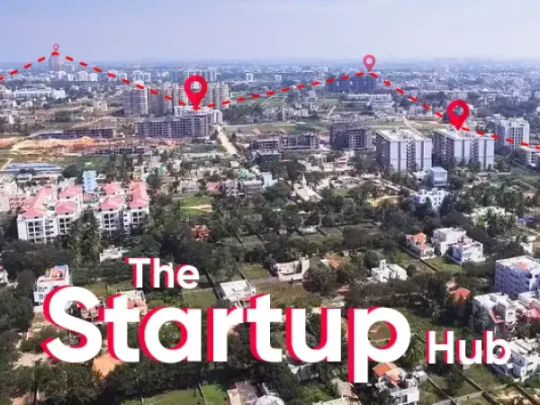
Bangalore stands out for both its impressive number of start-ups as well as significant venture capital funding. In 2020 alone, over $10 billion was invested into ventures located here - surpassing even San Francisco and London! This funding influx allowed start-ups in Bangalore to rapidly scale and enter new markets more effectively.
How and What made Bangalore one of the biggest hubs for start-ups
If you are thinking about what made Bangalore one of the biggest hubs for start-ups, Find out below:
Overview of Bangalore's start-up ecosystem
Bangalore's start-up ecosystem is made up of a dynamic mix of entrepreneurs, investors, mentors, and incubators. This city provides co-working spaces, accelerators, and networking events that foster innovation and collaboration between startups. Not only this, startups here also enjoy support from organizations like the National Association of Software and Service Companies (NASSCOM) and Karnataka Biotechnology and Information Technology Services (KBITS), providing resources and guidance for entrepreneurial success.
Statistics and market trends showcasing the impact of start-ups in Bangalore:
Bangalore startups' impact can be gauged from their numbers as detailed below:
According to a report released by NASSCOM, Bangalore held 44% of India's start-up funding in 2020, attracting investments worth an estimated total of $4.2 billion.
Flipkart, Swiggy, and Ola are among the many unicorns found here that have not only revolutionized their respective industries but have also created jobs and promoted economic development.
Expert opinions on the factors contributing to Bangalore's success as a start-up hub:
Experts attribute Bangalore's success as a start-up hub to several factors.
First of all, its strong talent pool includes top educational institutions like IISc and IIM that produce skilled graduates for start-up ventures.
Bangalore's supportive government policies - like the Karnataka Start-up Policy that offers incentives and exemptions to start-ups. It has created an inviting atmosphere for entrepreneurs.
Venture capitalists and angel investors who fund promising start-ups also contribute greatly to Bangalore's success.
What changes did it bring to Bangalore as a city and to India:
Bangalore's start-up scene has resulted in profound transformation both locally and nationally.
First and foremost, the start-up ecosystem has caused a shift in workspace culture, with co-working spaces and flexible work arrangements becoming commonplace. This allows entrepreneurs from different backgrounds to come together and share their vision and resources.
Start-ups have led to an expansion of other industries in Bangalore, such as hospitality, real estate, and transportation, creating employment opportunities while strengthening local economies and raising salaries in general.
Furthermore, India has gained international prominence as an incubator of innovative start-ups resulting from Bangalore's start-up success story.
A Lot More that Defines How Bangalore has Become a Global Hub For Startups
There is a lot more that defines how Bangalore has become a global hub for startups in every sector. Keep reading.
Factors influencing Bangalore's start-up scene:
Bangalore's vibrant start-up scene can be attributed to multiple factors.
Firstly, there are government policies that foster start-up growth. The Karnataka government's establishment of the Karnataka Startup Cell and Elevate 100 program provides startups with funding, mentorship, and networking opportunities.
Access to funding has also played a critical role in Bangalore's start-up growth. There exists an established investor community here with venture capital firms, angel investors, and corporate funds actively investing in promising start-ups - this capital fuelled their expansion.
Impact of start-ups on various sectors in Bangalore:
Start-ups have had an enormous impact in various sectors in Bangalore. Within technology, start-ups have driven innovation and disruption that led to cutting-edge solutions being created by companies like Flipkart and Ola in terms of e-commerce and transportation. Zoho and Freshworks were revolutionizers within the software industry, respectively.
E-commerce start-ups like Flipkart and Myntra have revolutionized retail shopping experiences while creating employment opportunities and contributing to overall economic development in cities around the country.
Start-ups like Practo and Portea Medical have used technology to offer accessible and cost-effective health solutions that bridge the gap between patients and providers. These platforms serve to bridge this divide.
What's Next:
Now you might think about what lies ahead in India’s Silicon Valley, find what we expect below. Read on.
Predictions for Future Growth and Development:
According to a report released by NASSCOM, Bangalore boasts over 7,000 start-ups. Making it India's leading start-up hub and accounting for 20% of India's overall startup activity. It also brings a 20% surge due to the favorable policy environment and funding options available here.
Thanks to government initiatives like Digital India and Make in India, policy conditions that support start-ups have become conducive. Furthermore, increasing accessibility of funding options from both domestic and foreign investors could fuel further development in this city.
Emerging technologies such as artificial intelligence, blockchain, and the Internet of Things present start-ups in Bangalore with numerous opportunities. These technologies hold immense promise to disrupt various industries while creating innovative solutions. Furthermore, the growing demand for sustainable and clean technologies should stimulate further start-up growth within sectors like renewable energy or waste management.
Potential Challenges and Opportunities:
Bangalore's start-up ecosystem has experienced phenomenal growth over recent years; however, there remain several challenges it must navigate as part of this development process. One such issue is competition for talent; with new start-ups emerging each day, there are fewer qualified professionals available, and competition increases exponentially, resulting in rising talent costs. To sustain growth, it is vital that start-ups focus on recruiting and retaining staff for optimal business operations.
One challenge of start-up business ownership lies in continuous innovation and differentiation. Due to an ever-increasing number of start-ups entering certain sectors, competition may become intense in certain arenas; therefore, start-ups must adapt their offerings over time in order to remain ahead of their rivals and remain in their game.
Conclusion
Bangalore's start-up ecosystem plays a pivotal role in driving economic development and progress. Generating employment opportunities, encouraging innovation, and drawing investment are just a few benefits it brings, while established start-ups and successful unicorns create ripple effects that lead to the growth of ancillary industries and the diversification of the economy overall. Bangalore's longstanding history as an incubator of technological progress, combined with its supportive infrastructure, makes it the ideal location for ambitious entrepreneurs looking to start businesses of their own. The start-up ecosystem here has become an engine of economic progress, which contributes to globally recognized success stories like Bangalore.
6 notes
·
View notes
Text
Exploring the Top-Ranked Programs at SRM University, Sonepat: The Top Private University in Haryana
SRM University, Sonepat, stands proudly as a beacon of excellence in higher education in the heart of Haryana. As a top private university in Haryana, SRM University Sonepat has garnered a reputation for excellence, offering a diverse range of programs designed to equip students with the skills and knowledge needed to excel in today's competitive world. In this article, we will delve into some of the top-ranked programs offered by SRM University, Sonepat, which highlight the institution's commitment to academic quality and innovation.
Engineering Excellence:
SRM University, Sonepat, is popularly known for its wide range of engineering programs that have consistently earned recognition for its quality. The university offers undergraduate and postgraduate degrees in various engineering disciplines, including Computer Science, Electronics & Communication, Mechanical Engineering, and Civil Engineering, Biomedical Engineering, the university provides students with a strong foundation in theoretical knowledge and practical skills. The state-of-the-art laboratories and industry collaborations ensure that students receive hands-on experience and exposure to cutting-edge technologies.
Management for Tomorrow's Leaders:
The School of Management at SRM University, Sonepat, offers an array of management programs that are designed to nurture future business leaders. With a focus on contemporary business practices, these programs cover areas such as Marketing, Finance, Human Resource Management, and Entrepreneurship. The faculty members, many of whom are industry veterans, provide valuable insights and mentorship, preparing students to tackle real-world challenges.
Innovation in Computer Science:
The field of Computer Science is evolving rapidly, and SRM University, Sonepat, has kept pace with the industry's demands. Their computer science programs are renowned for their relevance and innovation. With cutting-edge courses in Artificial Intelligence, Data Science, and Cybersecurity, students are equipped with the skills needed to thrive in the tech-driven world.
Biotechnology:
The Biotechnology Department at SRM University Delhi-NCR, Sonepat, was founded in 2018 and offers a Postgraduate M.Sc. program. Their mission is to provide students with strong technical skills and real-world understanding. They have well-equipped labs and experienced faculty members who teach both fundamentals and advanced concepts. In addition to traditional classroom teaching, students gain practical experience through lab work and develop critical thinking skills. They also offer project training in top organizations like DRDO and CSIR, organize workshops, invite experts for talks, and encourage students to participate in national and international events.
Humanities and Social Sciences:
The Humanities and Social Sciences Department at SRM University, Delhi-NCR includes four departments: English, Economics, Political Science, and Psychology. Thier vision is to nurture a love for knowledge and an understanding of the world through interdisciplinary learning. They aim to create a welcoming and inclusive academic environment for high-quality education.
Whether the students are studying at the undergraduate or postgraduate level, are prepared for various professional careers, including education, research, business, law, government, publishing, journalism, advertising, corporate sector, NGOs, and higher education.
Conclusion:
SRM University, Sonepat, firmly establishes itself as a top private university in Haryana through its commitment to academic excellence and innovation. The institution's diverse range of programs ensures that students have a wide array of options to choose from, depending on their interests and career aspirations. With a faculty that is dedicated to nurturing talent and state-of-the-art facilities that support learning, SRM University, Sonepat, continues to be a preferred destination for students seeking quality education in Haryana.
2 notes
·
View notes
Note
do you happen to know of any epidemiologists on the internet who are actually doing responsible science communication abt monkeypox, or is everybody asleep at the wheel
there are lots, and they were doing it when i said that. leadership especially at the CDC is who i was trying to criticize. epidemiologists in general have been talking about monkeypox for decades. i've complained about "limited data" but the data that exists comes from people in the field doing their job well. several of the historical papers i've linked to have been from the national center for biotechnology information national library of medicine at the national institute of health. recently my local hospitals were also at or near 100% capacity (from covid), so... medical professionals were all fucking BUSY. that's all commendable work regardless of job title
biden admin identifying priorities and $140m funding, and WHO declaring PHEIC, are both going to do a lot of good work to stem the outbreak. even in the case of the WHO PHEIC vote going 9 to 6 against, i think it's probably reassuring that some of the "no" votes said they wanted more time to plot how to best handle it. i said "oh whew that covers 75% of my fears" a few days ago, we're still in the "first 100 days" (counting since the first US case, arbitrarily, it's about day 65-70), but we're in much better shape now, policy-wise. now most people in the US should probably be able to go to a doctor and get a vaccine much more easily, or at least get on a waiting list for (thing your local county is doing...? idk) which was the bulk of my concern
it's administrated very locally. i can say i trust the leadership working on this for my local county because i directly encountered them, but i can't say anything about any other county. i don't think anybody is being purposefully malicious or anything, i think it's plainly obvious everyone is just exhausted
the only time i've encountered blatant homophobia was when i deliberately read an article from a news site with "catholic" in the URL. i think i saw one other article that had a very obviously photoshopped stock photo of a guy with pox. i don't think that was helpful lol but even those instances are vanishingly rare, and i've seen far more good coverage
23 notes
·
View notes
Text
China crafts weapons to alter brain function; report says tech meant to influence government leaders
China‘s People’s Liberation Army is developing high-technology weapons designed to disrupt brain functions and influence government leaders or entire populations, according to a report by three open-source intelligence analysts.
The weapons can be used to directly attack or control brains using microwave or other directed energy weapons in handheld guns or larger weapons firing electromagnetic beams, adding that the danger of China‘s brain warfare weapons prior to or during a conflict is no longer theoretical.
“Unknown to many, the Chinese Communist Party (CCP) and its People’s Liberation Army (PLA) have established themselves as world leaders in the development of neurostrike weapons,” according to the 12-page report, “Enumerating, Targeting and Collapsing the Chinese Communist Party’s Neurostrike Program.” The Washington Times obtained a copy of the study.
The U.S. Commerce Department in December 2021 imposed sanctions on China‘s Academy of Military Medical Sciences and 11 related entities the department said were using “biotechnology processes to support Chinese military end-uses and end-users, to include purported brain-control weaponry.”
Few public studies or discussions, however, have been held regarding the new advanced military capability.
Neurostrike is a military term defined as the engineered targeting of the brains of military personnel or civilians using nonkinetic technology. The goal is to impair thinking, reduce situational awareness, inflict long-term neurological damage and cloud normal cognitive functions.
The study was written by Ryan Clarke, a senior fellow at the East Asian Institute of the National University of Singapore; Xiaoxu Sean Lin, a former Army microbiologist now with Feitan College; and L.J. Eads, a former Air Force intelligence officer and current specialist in artificial intelligence for the U.S. intelligence community. The three authors write that China‘s leadership “views neurostrike and psychological warfare as a core component of its asymmetric warfare strategy against the United States and its allies in the Indo-Pacific.”
According to the report, neurostrike capabilities are part of standard military capabilities and should not be viewed as an unconventional weapon limited to use in extreme circumstances.
Likely areas of use for the weapons included Taiwan, the South China Sea, East China Sea and the disputed Sino-Indian border.
The threat is not limited to the use of microwave weapons: “[China‘s] new landscape of neurostrike development includes using massively distributed human-computer interfaces to control entire populations as well as a range of weapons designed to cause cognitive damage,” the report said.
Research is focused on using brain warfare weapons in the near term, and possibly during a Chinese military assault on Taiwan — a target for future Chinese military operations that U.S. military leaders have said could be carried out in the next four years.
“Any breakthrough in this research would provide unprecedented tools for the CCP to forcibly establish a new world order, which has been [Chinese President] Xi Jinping’s lifelong goal,” the report said.
Militarily, brain warfare can be used in what the Pentagon has called China‘s “anti-access, area-denial” military strategy for the Indo-Pacific.
“Imagine (at least partially) immunized PLA troops being inserted into a geography where a specific weaponized bacterial strain has been released prior to their entry to prepare the ground and eliminate points of resistance,” the report states. “Any remaining sources of resistance on the ground are then dealt with through [Chinese] neurostrike weaponry that instill intense fear and/or other forms of cognitive incoherence resulting in inaction.”
That scenario would allow the PLA to establish absolute control over a nation like Taiwan, while at the same time blunting any American strategic options to intervene and send troops in to support Taiwan. The PLA could thus negate U.S. conventional military superiority with few near-term remedies for the United States, the report said.
FULL STORY
5 notes
·
View notes